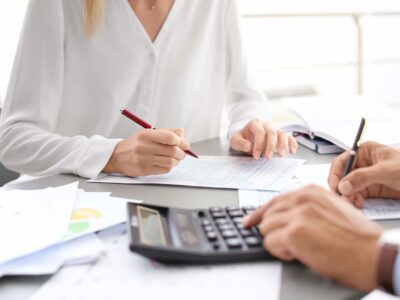
Thus, the methods used in calculating depreciation are typically industry-specific. The examples below demonstrate how the formula for each depreciation method would work and how the company would benefit. The units of production method assigns an equal expense rate to each unit produced. It’s most useful where an asset’s value lies in the number of units it produces or in how much it’s used, rather than in its lifespan. The formula determines the expense for the accounting period multiplied by the number of units produced.
How Do You Calculate Depreciation Annually?

Some methods make the item lose more value at the start (accelerated methods), like declining balance, double-declining balance, and sum-of-the-years-digits. The depreciable amount is like the total loss of value after all the loss has been recorded. If a company is still determining how long something will be useful, they might guess a shorter time and say it’s worth more at the end (higher salvage value) to keep it on their books longer. Or, if they want to show more expenses early on, they might use a method that makes the item lose more value at the beginning (accelerated depreciation).
How Small Business Accountants Use Salvage Value
- Each method uses a different calculation to assign a dollar value to an asset’s depreciation during an accounting year.
- Salvage value helps to figure out how much your old stuff is worth when it’s done being useful.
- For example, a delivery company might look at the value of its old delivery trucks for guidance.
- Depreciation allows you to recover the cost of an asset by deducting a portion of the cost every year until it is recovered.
- This method provides a systematic way to allocate the cost of an asset over its useful life, allowing for accurate financial reporting and evaluation of an asset’s value over time.
If a manufacturing company were to purchase $100k of PP&E with a useful life estimation of 5 years, then the depreciation expense would be $20k each year under straight-line depreciation. The core objective of the matching principle in accrual accounting is to recognize expenses in the same period as when the coinciding economic salvage value formula benefit was received. To estimate salvage value, a company can use the percentage of the original cost method or get an independent appraisal. The percentage of cost method multiplies the original cost by the salvage value percentage. Think of it as your asset’s future garage sale price after it’s done its duty for you.
Comparing Salvage Value to Other Values
Salvage value can sometimes be merely a best-guess estimate, or it may be specifically determined by a tax or regulatory agency, such as the Internal Revenue Service (IRS). The salvage value is used to calculate year-to-year depreciation amounts on tangible assets and the corresponding tax deductions that a company is allowed to take for the depreciation of such assets. If the asset is sold for less than its book value then the difference in cost will be recorded as the loss of the tax values. The scrap value is also important to an organisation as it determines the cash flow it shall receive upon selling an asset after its useful life.

Depreciation Calculator
- Residual values are also called break-up values, scrap values, and salvage values.
- Similarly, organizations use it to examine and deduct their yearly tax payments.
- Say you’ve estimated your 2020 Hyundai Elantra to have a five-year useful life, the standard for cars.
- Depreciation is a non-cash expense that allocates the purchase of fixed assets, or capital expenditures (Capex), over its estimated useful life.
Suppose a company spent $1 million purchasing machinery and tools, which are expected to be useful for five years and then be sold for $200k. The impact of the salvage (residual) value assumption on the annual depreciation of the asset is as follows. In order words, the salvage value is the remaining value of a fixed asset at the end of its useful life. In the next section, we’ll start by calculating the numerator, the purchase cost subtracted by the salvage value. From our modeling tutorial, our hypothetical scenario shows the method by which depreciation, PP&E, and Capex can be forecasted, and illustrates just how intertwined the three metrics ultimately are.
But in the absence of such data, the number of assumptions required based on approximations rather than internal company information makes the method ultimately less credible. The average remaining useful life for existing PP&E and useful life assumptions by management (or a rough approximation) are necessary variables for projecting new Capex. Therefore, companies using straight-line depreciation will show higher net income and EPS in the initial years. At the end of the day, the cumulative depreciation amount is the same, as is the timing of the actual cash outflow, but the difference lies in net income and EPS impact for reporting purposes. Company A purchases a machine for $100,000 with an estimated salvage value of $20,000 and a useful life of 5 years.
However, MACRS does not apply to intangible assets, or things of value that you can’t see or touch. Intangible assets are amortized using the straight-line method and usually have no salvage value, meaning they’re worthless at the end of their useful lives. To appropriately depreciate these assets, the company would depreciate the net of the cost and salvage value over the useful life of the assets. If the assets have a useful life of seven years, the company would depreciate the assets by $30,000 each year. Book value and salvage value are two different measures of value that have important differences.
What Are the Different Ways to Calculate Depreciation?
Consider it a gauge indicating the extent to which your asset has aged or deteriorated. Each asset type may have different factors influencing its value, such as market demand, technological advancements, and expected usage patterns. Grasping this idea is crucial as residual value aids companies in making educated choices related to asset acquisition, depreciation, and disposal. You can still calculate depreciation without a salvage value; just put a $0 in any place where you need to enter a salvage value. Useful life is the number of years your business plans to keep an asset in service.
 يلا خدمات
يلا خدمات